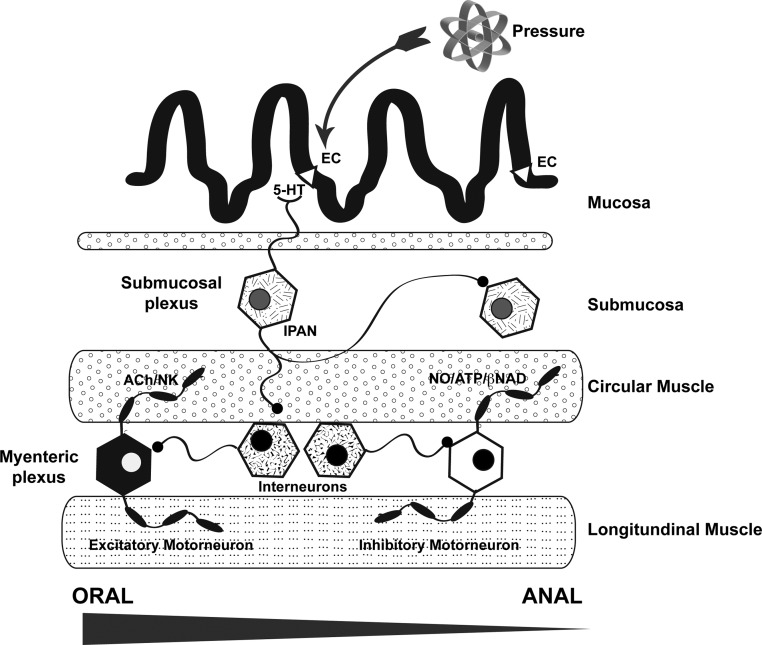Fig. 2.
A cartoon showing the layers of the bowel wall and the cells thought to be active in mediating the peristaltic reflex. Increased intraluminal pressure initiates the secretion of 5-HT from EC cells in the epithelium of the intestinal mucosa. 5-HT stimulates the mucosal projections of intrinsic primary afferent neurons (IPANs). Although these cells are found in both the submucosal and myenteric plexuses, only a submucosal IPAN is shown. IPANs activate ascending and descending interneurons, which in turn stimulate orad excitatory and distal inhibitory motor neurons, respectively. The interneurons enable the peristaltic reflex to manifest ascending excitation and descending inhibition of smooth muscle. Excitatory motor neurons use acetylcholine (ACh) and/or a tachykin to trigger contraction of the circular muscle, whereas inhibitory motorneurons use NO and/or a purine (β-NAD or ATP) to evoke muscle relaxation. Most interneurons are cholinergic and activate nicotinic receptors; however, 5-HT is also a transmitter of descending myenteric interneurons.

